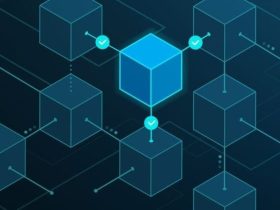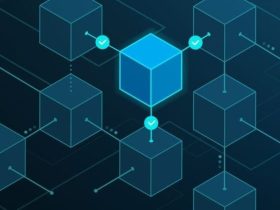In today’s hyper-connected world, cybersecurity sits at the nexus of innovation and risk. From AI-powered video-surveillance systems to industrial control networks running machine-learning models, enterprise attack surfaces are expanding exponentially. Meanwhile, boardroom priorities are shifting: generative AI tools now compete with security teams for budget dollars, and advisory firms are assembling specialized AI-security practices. In this op-ed–style briefing, we distill five of the latest cybersecurity developments—spanning technology trends, risk management insights, leadership moves, and new defensive frameworks—to help security leaders, technologists, and investors understand what’s next in the fight to protect data, infrastructure, and reputations.
1. AI & Analytics Drive Video-Surveillance Security
Cybersecurity, AI, and analytics are reshaping the video-surveillance market, according to a recent report by Techzine. As cameras proliferate in smart cities, retail stores, and critical infrastructure, legacy systems struggle to keep pace with modern threats—ranging from camera hijacking and data exfiltration to adversarial attacks on analytics models. The report highlights:
-
AI-Powered Threat Detection: Machine-learning algorithms now sift through hours of footage in real time, flagging anomalous behavior—such as unauthorized access attempts or masked individuals—even in low-light or crowded scenes.
-
Cloud & Edge Analytics: Hybrid architectures distribute compute between on-camera edge processors and centralized cloud platforms, balancing latency requirements with the need for large-scale model training.
-
Security-First Design: Vendors are embedding cryptographic modules and secure-boot mechanisms within camera firmware to guard against supply-chain tampering and firmware-level exploits.
Opinion & Implications
The convergence of AI and video security represents both an opportunity and a threat. On one hand, smarter analytics can drastically reduce false positives and accelerate incident response. On the other, adversaries are exploring ways to poison training data or reverse-engineer models to evade detection. Security leaders must therefore adopt a “zero-trust” mindset—not only at the network perimeter but also at the device and algorithmic levels. Investing in continuous threat-modeling, red-teaming AI pipelines, and cross-vendor interoperability testing will be critical to ensure these powerful tools don’t become attack vectors themselves.
Source: Techzine
2. Industrial AI at Scale: Hidden Cyber Risks
As manufacturers and utilities rush to embed AI into control systems and predictive-maintenance workflows, a recent white paper from IMD Business School warns of overlooked cybersecurity pitfalls when scaling industrial AI deployments. Key findings include:
-
Data Integrity Threats: Industrial AI models rely on sensor streams for real-time decisioning. Attackers who tamper with training data or manipulate sensor inputs can induce stealthy malfunctions—ranging from incorrect load balancing in power grids to faulty robotics control on assembly lines.
-
Model-Poisoning Attacks: Without rigorous validation pipelines, poisoned data samples can subtly skew model behavior. In sensitive environments, even a 1–2% accuracy drift can trigger unsafe actuator commands or mask early warning signs of equipment failure.
-
Legacy-Integration Vulnerabilities: Many AI pilots bolt onto decades-old SCADA and PLC systems. These legacy components often lack firmware signing or secure update mechanisms, creating backdoors that malware can exploit to disrupt AI-driven processes.
Opinion & Implications
Industrial AI promises efficiency gains and predictive insights, but security teams must treat AI models and training datasets as crown jewels. A holistic “AI-native” defense strategy should encompass strict data provenance controls, automated integrity checks, and adversarial-testing frameworks. Moreover, cross-functional collaboration between IT security, OT engineers, and data scientists is critical—only then can organizations avoid scenarios where a single poisoned datapoint cascades into a multi-million-dollar outage.
Source: IMD Business School
3. AWS Survey: Generative AI Tops Cybersecurity in 2025 Tech Budgets
An AWS-commissioned survey of 450 IT leaders—published by The Journal—reveals that in 2025, 54% of enterprises plan to allocate more budget to generative AI initiatives than to cybersecurity defenses. While 73% cite business-process automation as their top AI use case, just 37% prioritize funding for threat-detection tools or incident-response teams.
-
Budget Shifts: AI is now seen as a near-term revenue driver, whereas cybersecurity is viewed as a cost center—despite a 28% rise in reported breach costs in the past year.
-
Security Debt Concerns: Only 22% of respondents have formalized risk-assessment processes for new AI deployments, raising alarms that unchecked AI rollouts may introduce unmitigated attack surfaces.
-
Vendor Trust Dynamics: CIOs report greater confidence in cloud-native AI platforms (e.g., AWS SageMaker) than in legacy security vendors—underscoring a broader digital-transformation pivot that devalues traditional perimeter defenses.
Opinion & Implications
This budgetary rebalancing reflects a profound mindset shift: organizations are betting on AI to out-innovate threats, rather than on security teams to counter them. In reality, the two investments must go hand in hand. Embedding AI-powered threat analytics into the CI/CD pipeline, and funding “red-teams” that simulate AI-specific attack scenarios, can ensure that innovation doesn’t come at the expense of protection. Security leaders should leverage this moment to reframe cybersecurity as an enabler of safe AI adoption—not a barrier to progress.
Source: The Journal
4. MorganFranklin Cyber Appoints Alison Andrews as Managing Director to Lead AI Service Line
MorganFranklin Cyber has named Alison Andrews as Managing Director to spearhead its newly formed AI-powered security analytics practice. With over 15 years of experience in data science and risk management—including leadership roles at a major consulting firm—Andrews will build end-to-end solutions that integrate machine learning, threat intelligence, and automation for enterprise clients.
-
Practice Focus: The AI service line will deliver anomaly detection, predictive-risk modeling, and autonomous incident response, leveraging both proprietary algorithms and open-source frameworks.
-
Market Timing: As cyber breaches become more sophisticated and AI threats proliferate, demand for AI-augmented security is surging. MorganFranklin aims to capture a slice of the projected $46 billion AI-in-security market by 2028.
-
Leadership Signal: Andrews’s appointment underscores that top consultancies view AI-driven security not as an experimental add-on, but as a core pillar of their advisory offerings.
Opinion & Implications
Talent is the true differentiator in AI-security. By recruiting a seasoned data-science leader, MorganFranklin Cyber signals to the market that it’s doubling down on advanced analytics—moving beyond SIEM and standard MSSP models. Competitors will need to respond with equal vigor, ramping up investments in specialized skill sets and R&D to avoid being outflanked by consultancies that deliver turnkey AI-powered defenses.
Source: BusinessWire
5. INE Security Alert’s Continuous CVE Practice Closes Critical Defense Gap
INE Security Alert, a vulnerability-management startup, has rolled out its Continuous CVE Practice—a managed service that bridges the lag between CVE disclosures and actionable defenses. Key features include:
-
Real-Time CVE Ingestion: Automated feeds ingest NIST and vendor CVE announcements within minutes of publication.
-
Risk-Prioritization Engine: A scoring algorithm correlates CVEs to asset inventories, exploit availability, and business-impact models—ensuring teams focus on true high-risk vulnerabilities first.
-
Automated Playbooks: Pre-built remediation workflows trigger patch orchestration and compensating controls, reducing mean-time-to-mitigation by up to 60%.
Opinion & Implications
The vulnerability-alert paradox—where abundant data overwhelms security teams—has long hampered effective patch management. INE’s Continuous CVE Practice exemplifies how analytics and automation must work in concert to close defense gaps. As threat actors increasingly weaponize zero-days and chained exploits, security leaders should consider managed, data-driven CVE programs as essential components of a resilient cybersecurity posture.
Source: PR Newswire
Expert Commentary & Op-Ed Insights
Across these five developments, three themes crystallize:
-
AI as Double-Edged Sword
From video analytics to industrial control systems, AI amplifies both capability and risk. Organizations must treat AI pipelines as critical infrastructure—subject to the same rigorous governance, testing, and threat-modeling as traditional IT assets. -
Innovation vs. Security Funding Tensions
The AWS survey’s revelation—that generative AI now outpaces cybersecurity in budget priority—highlights a dangerous misalignment. Security teams must articulate clear ROI for protective measures and integrate defense into the AI innovation cycle. -
Leadership & Automation Imperatives
Strategic hires like Alison Andrews and solutions like Continuous CVE Practice underscore that human expertise and automated frameworks are complementary. The most resilient programs will blend domain-expert leadership with machine-driven orchestration.
Conclusion
May 14, 2025’s cybersecurity roundup underscores a striking paradox: as AI-driven capabilities proliferate—from smarter cameras to generative content engines—many organizations are deprioritizing the very defenses needed to secure them. Yet pockets of innovation—whether in managed CVE workflows or AI-focused consulting practices—offer a blueprint for bridging this gap. Looking ahead, security leaders must champion “secure by design” for AI initiatives, secure executive buy-in for balanced tech budgets, and cultivate interdisciplinary teams that can safeguard both legacy and intelligent systems. Only by aligning resources, talent, and automation can enterprises navigate the emerging threat landscape with confidence.


















Got a Questions?
Find us on Socials or Contact us and we’ll get back to you as soon as possible.